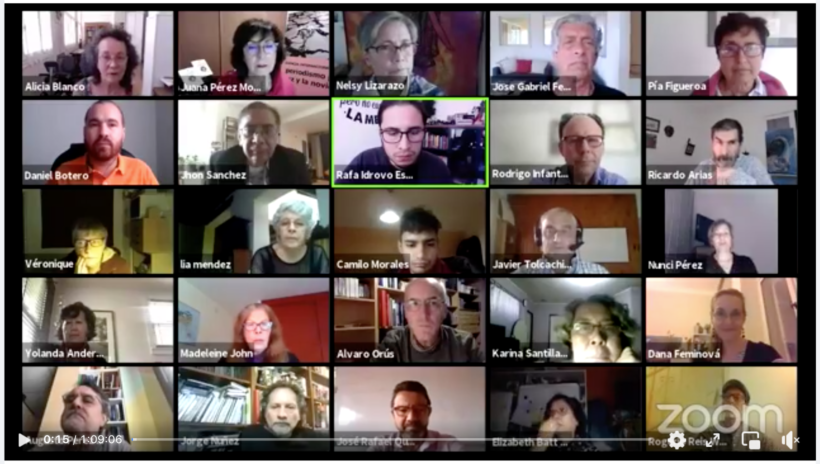As part of the activities of the Nonviolent October in Ecuador, the International News Agency Pressenza today presented its most recent publication: “Nonviolent Journalism: towards a humanising approach to communication”.
The book is the result of a reflection on the agency’s experience in the thirteen years of activity since its creation in 2009 in Milan, Italy. Today, the agency has editorial teams in 24 countries and provides information in nine languages. All the people who make up the agency are volunteers with a human rights, peace and nonviolence perspective.
One of the writers of the book is Pía Figueroa, co-director of the Agency and part of the Chilean editorial team. She describes that the first chapter of the book refers to the “Humanisation of Communication: the foundations of nonviolent journalism”. This section includes central elements of the new humanism, particularly the conception of human beings as historical and social beings who, through their actions, transform their own nature. The chapter develops conceptual aspects that underpin a way of looking at and conceiving events.
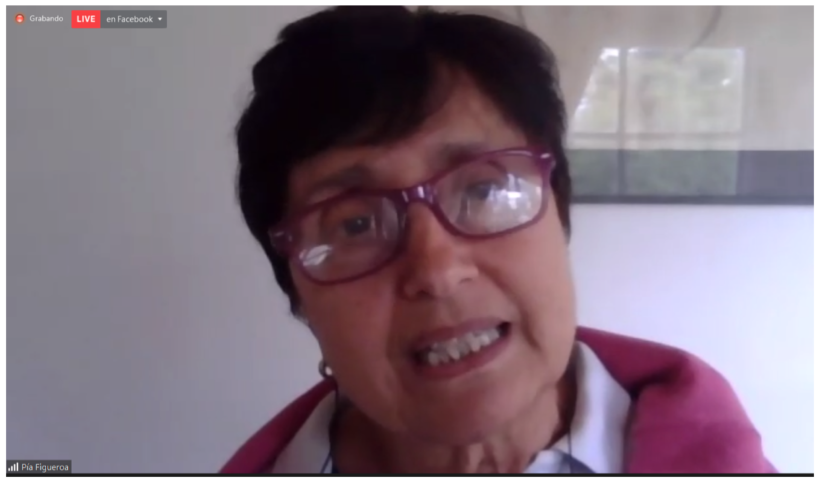
Pía Figueroa
In this chapter, Pía highlights the importance of the psyche and its space of representation. For her, human consciousness is fundamental to thinking about reversibility, without which it is not possible to distinguish which approach is used to write. This topic is not often dealt with in journalism, she says. In that sense, she considers this book to be an invitation to think about nonviolence and to take a position in writing from that place, where narrating the facts also contributes to the transformation of the writer and allows for the construction of a better world.
Another of the authors is Javier Tolcachier, who explains that the second chapter has to do with the basic principles for writing from a non-violent approach. He explains that the experience of various workshops held in Ecuadorian universities and institutions, which served as a “laboratory” to develop the principles developed in the text, was fundamental for this chapter.
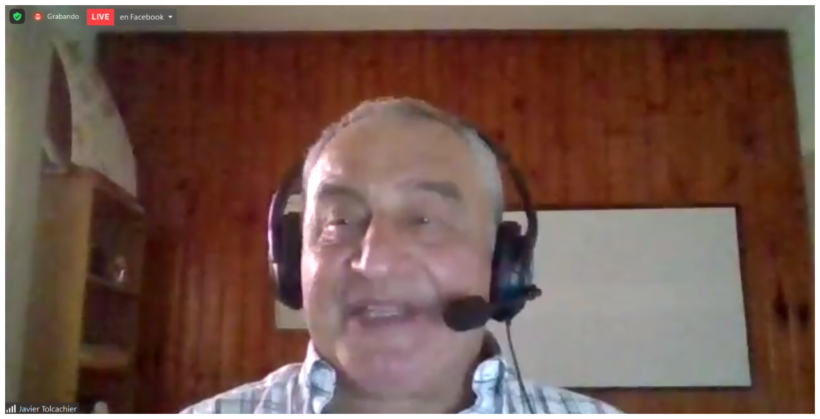
Javier Tolcachier
The author emphasises that the vision of the book is to see information as a social good and not as something commercial. For Javier, “beyond information is action” and he maintains that journalism must show this constant collective action.
Partiality as a place for journalistic writing, he affirms, is an engine of action, from which the event is interpreted and which, in this book, he promotes the application of, but also encourages the diversity of voices and approaches to an event. From his perspective, it is necessary to opt for an unacceptable view of violence. For him, denunciation is necessary, but also writing that promotes the resolution of conflicts and work on the basis of reconciliation as a means of hope.
Juana Pérez is also the author of this book, editor of Pressenza’s editorial office in Spain. She highlights the importance of thematic selection and sources for non-violent journalism. She considers Pressenza’s experience to be significant for the creation of its own agenda.
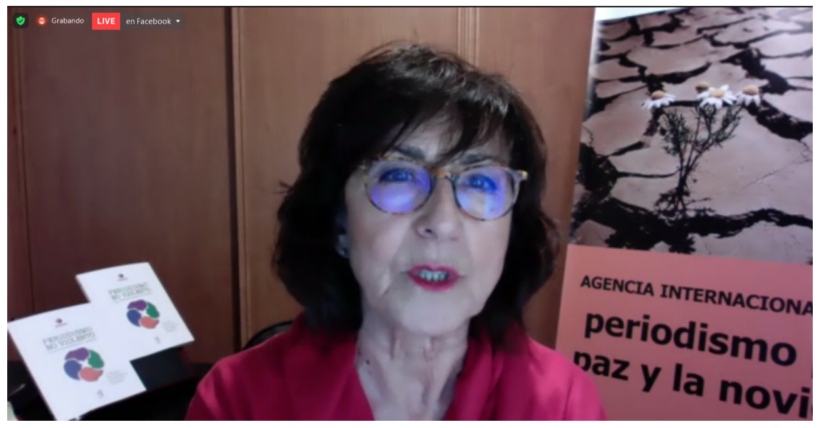
Juana Pérez
Regarding sources, she stresses that this freedom of topics should be focused on writing that has the capacity to amplify the voices of those who are violated, of the people; that it should tend towards hope. Therefore, journalism must explain the facts with a historical perspective, but also offer options to the problems that are narrated.
In the book, the author proposes “avoiding discriminatory language and language that encourages polarity in discourse”. She affirms that alternative agencies should denounce violence and always offer options to get out of it.
Nelsy Lizarazo, in her capacity as author of the book and editor of the Ecuadorian edition, affirmed that all the experiences gathered have also served to create methodological clues which, in this book, are developed in the fourth chapter and in two parts. The first includes four short workshops to approach key concepts such as gaze, landscape formation, intentionality and the human. The second includes concrete step-by-step guides for applying the non-violent approach to journalistic formats such as news, opinion pieces, interviews, reports and photo-reportage.
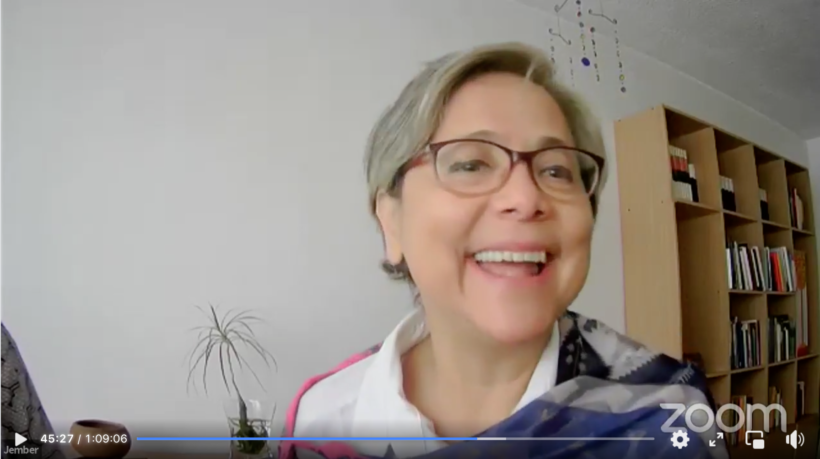
Nelsy Lizarazo
The presentation of the book was marked by videos from various members of the Agency’s newsrooms. Mariano Quiroga, from the Argentinean newsroom, highlighted “the independence with which we manage to choose our agenda (…) the approach of who to interview. In telling others, we have been able to invite other people to participate”. From the point of view of this volunteer: “Pressenza, as well as the book, is an example of collective work”.
For José Gabriel Feres, editor of the publication, this book is part of the condensation of various humanising experiences that have also been reflected in other books, such as 2012’s “Perspectives from Humanism on the crossroads of the current moment”; and 2014’s “The global crisis: consequences and opportunities”. Another work published from a humanist perspective is Javier Tolcachier’s “Tendencias. Cuadernos de capacitación política“, published in 2019. All these books have been focused on a nonviolent and humanising perspective. José Gabriel affirmed that each work carried out by Pressenza volunteers is a contribution at a time when there is a lot of uncertainty.
If you would like to see the presentation, you can do so at: https://youtu.be/2_MovZL5ypI


